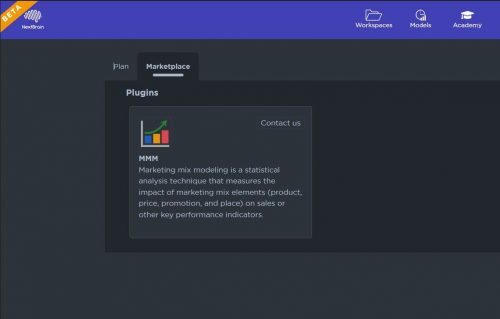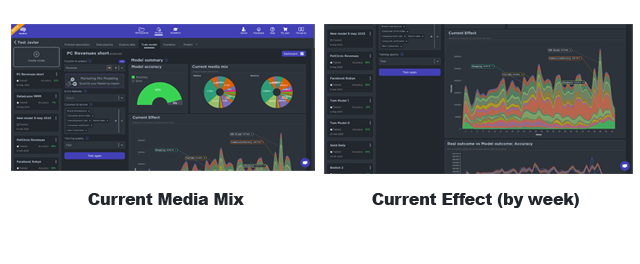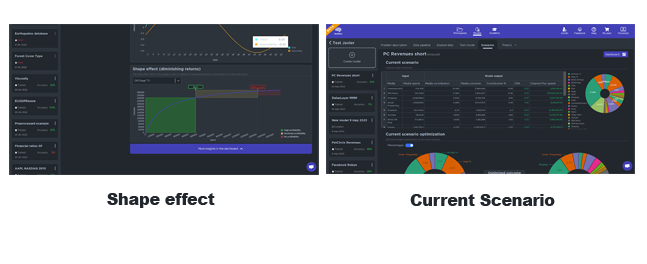
As a marketer, you know that measuring the effectiveness of your advertising campaigns is critical to the success of your business. But how do you know which channels are driving the most ROI and where to allocate your budget for maximum impact? The answer lies in Marketing Mix Modeling (MMM).
MMM is a data-driven approach that uses statistical analysis to identify the relationships between marketing variables (e.g., TV ads, digital ads, social media, etc.) and sales. By measuring the impact of each marketing variable on sales, MMM provides insights into which channels are most effective at driving revenue and which channels are underperforming.
Here’s how MMM works
Data Collection: MMM requires historical data on sales and marketing spend over a period of time (e.g., monthly, quarterly, or yearly). The data should include information on all the marketing variables you want to analyze, as well as other factors that may influence sales, such as seasonality, price changes, and competitor activity.
Model Development: A statistical model is developed to analyze the data and identify the relationships between marketing variables and sales. The model may use regression analysis, time-series analysis, or other statistical techniques to determine the impact of each variable on sales.
Model Validation: The model is validated using a range of statistical tests to ensure that it accurately reflects the relationships between marketing variables and sales.
Insights and Optimization: The validated model provides insights into which marketing channels are driving the most ROI and which channels are underperforming. Based on these insights, businesses can optimize their marketing spend by allocating more resources to high-performing channels and reducing spend on channels that are not driving results.
1) The Benefits of MMM
Improved ROI: By optimizing your marketing budget based on MMM insights, you can increase the ROI of your advertising campaigns.
Better Decision-Making: MMM provides a data-driven approach to decision-making, enabling businesses to make informed decisions about their marketing spend.
Customization: MMM models can be customized to fit the unique needs of your business, providing insights into the specific marketing channels and strategies that are most effective for your brand.
Long-Term Planning: MMM provides insights into the long-term impact of marketing activities, enabling businesses to plan their marketing strategies more effectively.
Competitive Advantage: MMM gives businesses a competitive advantage by enabling them to make more informed decisions about their marketing spend and optimize their campaigns for maximum impact.

2) What industries can Marketing Mix Modeling be applied to?
- Retail: Retailers can use MMM to understand the impact of different marketing channels, such as in-store promotions, email marketing, and social media advertising, on sales and customer acquisition.
- Healthcare: Healthcare organizations can use MMM to understand the impact of marketing on patient behavior, such as appointment scheduling and medication adherence, and optimize their marketing mix to achieve better health outcomes.
- Financial Services: Financial services companies can use MMM to analyze the effectiveness of their marketing campaigns on customer acquisition and retention, and optimize their marketing mix to drive higher revenue and profitability.
- Telecommunications: Telecommunications companies can use MMM to analyze the impact of marketing on customer acquisition, customer churn, and revenue, and optimize their marketing mix to achieve better business outcomes.
- Travel and Hospitality: Travel and hospitality companies can use MMM to analyze the effectiveness of their marketing campaigns on customer bookings and revenue, and optimize their marketing mix to drive higher occupancy and profitability.
3) Implementing MMM

Implementing MMM requires expertise in statistical modeling and marketing analytics. It’s important to work with an experienced marketing analytics firm that specializes in MMM to ensure that your model is accurate and meaningful.
In conclusion, Marketing Mix Modeling is a powerful tool that can help businesses make informed decisions about their marketing spend and optimize their campaigns for maximum ROI. By using MMM insights to allocate resources more effectively, businesses can improve their bottom line and gain a competitive advantage in their industry.
Some examples of MMM plugin:



4) Planning
5) Glossary of Terms
If you are interested in this module, you can activate it in the MARKETPLACE section of our application.
Please contact us for more information and prices



